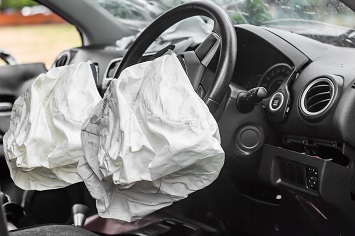With the issuance of an interim exemption from the Resource Conservation and Recovery Act’s (RCRA) hazardous waste (Subtitle C) requirements, the EPA is playing its part in mitigating risks associated with the recall of Takata’s defective auto airbag inflators.
The interim final rule allows approximately 15,000 U.S. auto dealerships to collect airbags they receive and then ship them to an airbag waste collection facility without becoming subject to the Subtitle C program. Dealerships seeking to benefit under the exception will need to comply with several conditions set in the interim rule, including limits on how many airbags may be accumulated before shipment, use of specified containers for shipment, and maintenance of records.
To simplify matters for dealerships, the exception also applies to the disposal of non-Takata airbags, provided all the conditions are met; however, the vast majority of items affected by the conditional exemption will be Takata airbag waste, says the EPA.
Given the urgency of the risk associated with the airbags, the interim final rule was issued without opportunity for public comment and will become effective immediately upon its publication in the Federal Register (FR). The prepublication version of the rule is available here.
Background
Concerns about Takata airbags emerged in 2013 when faulty propellants in the airbags exploded, releasing shrapnel that resulted in the deaths of vehicle passengers. It was found that the explosions were associated with high humidity, and the risk of explosions increased as the airbags aged. The EPA notes that the airbags have been associated with 16 deaths and at least 250 injuries in the United States as of August 2018.
In May 2015, the U.S. Department of Transportation (DOT) announced a national recall of airbag inflators manufactured by Takata. The recall affected 19 vehicle manufacturers, approximately 40 million vehicles, and 65–70 million airbag inflators. The DOT order required that all recalled airbags be preserved intact in climate-controlled rooms. In 2018, the DOT amended its order and allowed the airbags to be released for disposal.
Ignitable and Reactive
The EPA had determined that airbags are hazardous waste because they meet the RCRA hazardous waste characteristics of ignitability and reactivity. In other words, upon the DOT’s amendment to its preservation order, dealerships holding the airbags technically became hazardous waste generators that were required to meet all Subtitle C cradle-to-grave requirements (e.g., time limits on accumulation, manifesting, transportation, and reporting).
Disposal Would Be Slowed
As this plot unfolded, the EPA learned that imposing full generator requirements on automobile dealers that lack expertise and experience in managing hazardous waste would result in the slowdown, rather than the necessary acceleration, of the recall effort, resulting in even greater harm to human health and the environment. For example, as hazardous waste generators, dealers would be required to use certified hazardous waste transporters, which are less numerous and more expensive than standard hazardous material transporters used to transport recalled inflators under the DOT preservation order. This would pose an impediment to expeditious disposal in sparsely populated areas of the country.
Accordingly, the interim final rule removes the term hazardous waste generator from entities that generate airbag waste and now refers to them as airbag waste handlers; these entities include the automobile dealers, as well as independent repair facilities, collision centers, and salvage and scrapyards.
Conditions
Under the rule, airbag waste handlers are exempt from Subtitle C requirements, provided:
- The airbag waste is accumulated in a quantity of no more than 250 airbag modules or airbag inflators for no longer than 180 days.
- The airbag waste is packaged in a container designed to address the risk posed by the airbag waste and labeled Airbag Waste—Do Not Reuse.
- The airbag waste is sent directly to either (a) an airbag waste collection facility in the United States under the control of a vehicle manufacturer or its authorized representative or under the control of an authorized party administering a remedy program in response to a recall under the National Highway Traffic Safety Administration; or (b) a designated facility as defined in 40 CFR 260.10. The designated facility or the airbag waste collection facility that accepts the airbag waste from the airbag waste handler is considered the hazardous waste generator for the purposes of 40 CFR part 262 as the person whose act first causes a hazardous waste to become subject to the generator regulations.
- Transport of the airbag waste complies with all applicable DOT regulations in 49 CFR part 171 through 180 during transit.
- The airbag waste handler maintains at the handler facility for no less than 3 years records of all off-site shipments of airbag waste and all confirmations of receipt from the receiving facility.
The EPA says it is seeking comment on this interim final rule, although, again, the rule is effective immediately upon its publication in the FR.

